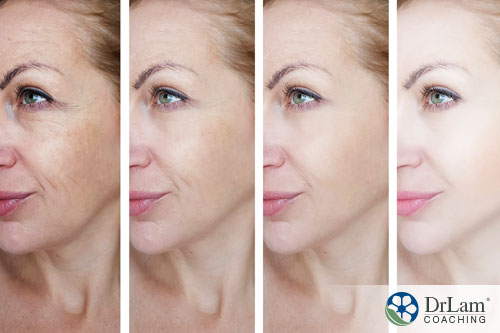 Your skin is the largest organ in your body, and its job is manifold. It acts as a barrier between you and your environment, protecting you from chemicals, temperature variations, pressure, and impact. It’s also responsible for regulating your body temperature through the hair and sweat, and it regulates circulation and fluid balance in your body through sweat as well. Your skin microbiome, the collection of flora it hosts, is responsible for keeping harmful microorganisms at bay. The sensory function of the skin is what helps you feel heat, cold, pressure, pain, and touch, as your skin has over 1000 nerve endings per square inch, with different receptors for each type of sensation.
Your skin is the largest organ in your body, and its job is manifold. It acts as a barrier between you and your environment, protecting you from chemicals, temperature variations, pressure, and impact. It’s also responsible for regulating your body temperature through the hair and sweat, and it regulates circulation and fluid balance in your body through sweat as well. Your skin microbiome, the collection of flora it hosts, is responsible for keeping harmful microorganisms at bay. The sensory function of the skin is what helps you feel heat, cold, pressure, pain, and touch, as your skin has over 1000 nerve endings per square inch, with different receptors for each type of sensation.
Finally, your skin is the site of vitamin D synthesis, which is actually a hormone, not a vitamin. When your skin is exposed to sunlight, the ultraviolet radiation that penetrates the upper layer of the skin, the epidermis, will photolyze provitamin D3, which was stored in the skin, to previtamin D3, which can then be converted to other forms that are used by the body.
On an aesthetic level, the appearance of your skin can tell you, and other people, a lot about the internal state of your health. In fact, that is one thing that is sometimes missing from conventional dermatological practice - the use of skin issues as a diagnostic tool for internal imbalances. The skin can tell you a lot about how you’re doing with your diet, lifestyle, medications, environment, stress levels, and other health concerns.
For example, dry, itchy skin is one of the symptoms of Adrenal Fatigue Syndrome (AFS), a collection of symptoms that develop when your adrenal glands have been overworked due to chronic stress. Stress is actually a big culprit in many health concerns, including many skin issues. When stress is chronic, your adrenal glands have to work extra hard to secrete your body’s main anti-stress hormone, cortisol.
At first, cortisol levels increase, and symptoms appear. But as adrenal fatigue progresses to more advanced stages, your adrenals become exhausted and their cortisol output drops, bringing along a set of even more severe symptoms.
Symptoms of AFS include fatigue, difficulty falling asleep, waking up in the middle of the night, easily gaining weight and difficulty losing it, PMS, infertility, low libido, frequent colds and flu, food and drug sensitivities, an inability to handle stress, digestive issues, heart palpitations, hair loss, brittle nails, dry skin, itchy skin, anxiety, mild depression, and brain fog, among others.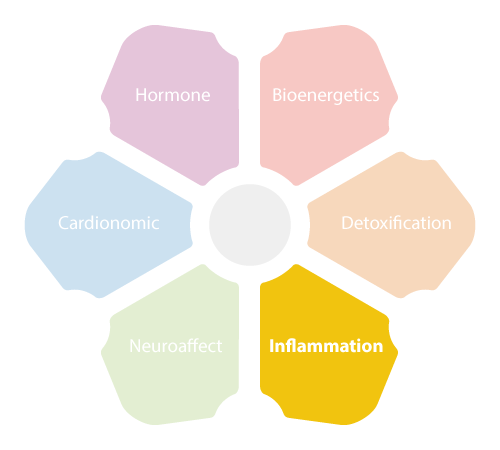
Many of these symptoms are also indicative of dysregulation in the NeuroEndoMetabolic (NEM) Stress Response, which is your body’s global response to stress. Your adrenal glands are only one aspect of your NEM, though a very important one. As they begin to weaken, the rest of your NEM has to compensate for the loss in their function, and that can bring on many other health issues, including systemic inflammation, which is a huge factor in the imbalance of the gut and skin microbiome.
More than a century ago, the zoologist Elie Metchnikoff stated that you can improve health and delay the aging process by ensuring the gut’s microbiome is in balance. His work in immunology, and his research into cellular and innate immunity, phagocytes, probiotics, and gerontology eventually earned him a Nobel prize in medicine in 1908, along with his colleague Paul Ehrlich.
Although his theory on the effects of manipulating the gut microbiome for health and anti-aging died off for a while, it came back into interest in the 1990s and has now become widely regarded as a cornerstone in nutritional and regenerative medicine, and is getting a lot of mainstream medical attention as well.
Collectively, the human microbiome, the microbiota that inhabits different parts of the body, including the oral, vaginal, gut and skin microbiome, is sometimes referred to as the second human genome. That’s because there are ten times more microbial cells in your body than there are actual human cells. In your gut alone, there are around 5,000 different species of microbes, totaling to around 100 trillion and weighing around 4.4 pounds.
The gut microbiome is the most popular and most extensively studied microbiome at this time, as it has many health implications, not just for the GI tract itself, but also for cardiovascular health and the health of the brain and nervous system. In fact, the gut-brain connection has a lot to do with the gut flora, and as we grow in our understanding of how the gut microbiome functions, we are beginning to see that the microbiota in the gut have a direct effect on mood and brain function.
The vaginal microbiome is also a very important area of research, as it not only affects women’s reproductive and sexual health, but it is also the site where infants get their first transfer of microbiota. As babies are birthed through the birth canal, they are in direct contact with the mother’s vaginal flora. This greatly helps with the baby’s immunity.
Nursing babies get more exposure to the mother’s microbiome through breastfeeding and develop their gut microbiome till ages two or three, when their gut microbiome finally resembles that of adults.
But interest has also been growing steadily for the skin microbiome, as it seems to have a big impact on the health and appearance of the skin, and it can also help the skin perform its protective, sensory, and regulatory functions better when in balance.
The skin and the gut lining have a lot of similarities; they can both be considered our interfaces with the outside world. But while the gut interface is around 98.4 square feet, the skin is 328 square feet. Every inch of your skin contains over 2.5 million bacteria. The makeup of the skin microbiome varies greatly depending on the individual as well as the area of the skin. The skin microbiome even varies depending on the area of the face you are testing.
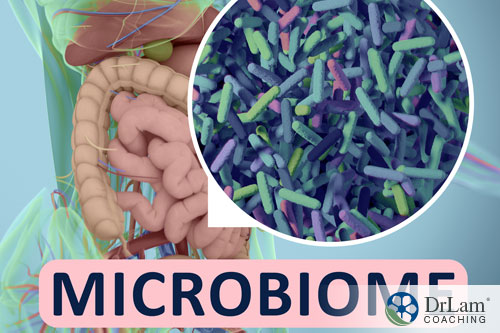 You might have noticed in yourself - when you’re eating right and staying hydrated, your skin shows it. You have that healthy glow, and if you have any skin issues, they probably improve a lot when your diet is clean. Then, if you’re traveling or some other situation disrupts your diet and routine, you notice your skin reflects this change as well. It looks duller, and you get flare-ups of acne, dryness, or other skin conditions.
You might have noticed in yourself - when you’re eating right and staying hydrated, your skin shows it. You have that healthy glow, and if you have any skin issues, they probably improve a lot when your diet is clean. Then, if you’re traveling or some other situation disrupts your diet and routine, you notice your skin reflects this change as well. It looks duller, and you get flare-ups of acne, dryness, or other skin conditions.
This is why suppressing skin issues by either covering them up, using aggressive topical treatments, or taking antibiotics doesn’t actually get to the heart of the matter. It may temporarily bring relief, but the symptoms are bound to return and repeat.
And unfortunately, the frequent use of antibiotics in the practice of dermatology doesn’t just affect you. It has also led to the development of “superbugs”, or antibiotic-resistant bacteria. This has vast public health implications. Thankfully, the Antibiotics Stewardship initiatives taken by the CDC, NIH, and CARB-x aim to reduce superfluous antibiotic use.
Whether used topically or taken internally, antibiotics can cause dysbiosis – the imbalance of the flora – in the gut and skin microbiome. This imbalance leads to many of the issues in skin health, adrenal fatigue, and other conditions.
You’ve probably heard of leaky gut syndrome, where the tight junctions in the gut’s lining begin to loosen and create leaks. These leaks let substances into the bloodstream that are not supposed to be there, substances such as food particles, bacteria, and toxins, which immediately trigger an immune response. As the immune system attacks these substances, it creates inflammation in the area.
But because these leaks persist, this cycle keeps repeating, creating chronic inflammation that can then spread from the gut to other parts of the body. Inflammation that reaches the brain and nervous system, for example, can cause brain fog, anxiety, and other mood disturbances. Inflammation that reaches the skin can cause acne, dermatitis, and other skin eruptions.
Interestingly enough, if the skin microbiome experiences dysbiosis, a similar situation occurs. Leaky skin can result, and the skin’s function as a protective barrier is compromised, allowing substances to penetrate the epidermis and skin layers and enter into the body.
And, once again, the immune system has to launch an attack and create inflammation in that area, causing skin eruptions like acne, dermatitis, eczema, and rosacea, as well as the formation of premature wrinkles. Balancing the gut and skin microbiome, therefore, is of utmost importance when addressing skin inflammation, as well as a host of other health issues.
Other than antibiotics, there are several factors that can cause or contribute to an imbalance in the gut and skin microbiome, and they include:
The NEM is composed of six circuits of organs and systems that work together to fight stress: the Hormone, the Bioenergetics, the Cardionomic, the Neuroaffect, the Inflammation, and the Detoxification circuits. The adrenal glands are part of the Hormone circuit, along with the thyroid and the reproductive organs (male testes and female ovaries).
When it comes to skin health and appearance, although all the NEM circuits play a role, the Hormone and Inflammation circuits are the two with the biggest impact, closely followed by the Detoxification circuit. Hormonal imbalances are notorious for triggering skin issues, as most women will attest to. Menstrual cycles, pregnancy, nursing, and menopause, for example, all bring with them different skin issues.
The Inflammation circuit, composed of the immune system, gut, and microbiome is also known to affect the skin. As we’ve seen, dysbiosis in the gut and skin microbiome can create eruptions and premature aging, and digestive issues almost always show symptoms in the skin.
When the Detoxification circuit, which is composed of the liver, the interstitium (the fluid-filled space between cell walls, organs, skin, and other barriers) and the immune system, is affected, the toxic load in the body can build up, causing or aggravating inflammation and adrenal fatigue. For the Inflammation circuit to be in balance, the Detoxification circuit has to be functioning properly so that the debris left over from immune responses can be gotten rid of in a timely manner.
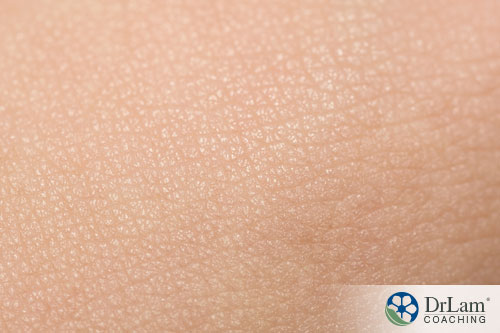 All of these circuits need the adrenal glands to be in top shape, and that’s why when you have AFS, you see issues with inflammation and detoxification, as well as with the digestive system and the skin. But let’s look at how AFS affects the skin more closely.
All of these circuits need the adrenal glands to be in top shape, and that’s why when you have AFS, you see issues with inflammation and detoxification, as well as with the digestive system and the skin. But let’s look at how AFS affects the skin more closely.
A lot of people with AFS have trouble falling asleep or staying asleep. Lack of sleep is notorious for giving the face and skin a “fatigued” look. Sunken eyes, dark circles around the eyes, puffiness and bags under the eyes, downturned corners of the mouth, droopy eyelids, and more wrinkles and fine lines have all been associated with lack of sleep.
Because with AFS you are tired and aren’t getting enough sleep, you’re less likely to be physically active. Physical activity helps with circulation, and skin that is not getting enough oxygenated blood will look duller and paler. It will lose its healthy glow.
The dry skin that is commonly experienced with AFS is a result of dysregulation in the secretion of another adrenal hormone, aldosterone. This hormone helps maintain the ratio of sodium to potassium in the body, which directly affects how much water your body retains. In AFS, this ratio goes out of balance and can create dehydration in the system, resulting in dry skin.
Dry skin can also be the result of thyroid dysfunction, which also commonly occurs in adrenal fatigue. Remember, the Hormone circuit of the NEM is composed of the adrenal glands, thyroid, and reproductive organs, and so when one is affected, the other components follow suit. When there is an imbalance in progesterone and estrogen, and you have a state of estrogen dominance in relation to progesterone levels, acne can develop.
An increase in skin pigmentation, where dark patches begin to appear on the skin, is another possibility with AFS, and that is usually due to the overproduction of corticotropin by the pituitary gland. The adrenal glands are part of the hypothalamic-pituitary-adrenal (HPA) axis, where the hypothalamus signals to the pituitary gland to stimulate the adrenal glands so they can produce stress hormones.
When the adrenals are weak, the HPA sometimes tries to overcompensate by producing more corticotropin to get them to function again, and its excess in the system can lead to hyperpigmentation.
And since chronic stress, whether physical or psychological, is the cause of AFS as well as a major factor in dysbiosis, adrenal fatigue and an imbalance in the skin microbiome share that common root. Without addressing such root causes, there is not much that can be done, internally or externally, that will heal and maintain the health of the skin or the adrenal glands.
Aging, whether in relation to appearance, health, or both, is also a consequence of prolonged, chronic stress. You can’t put on anti-aging cream and get a positive effect if your body is constantly in “fight or flight” mode and suffering under the weight of persistent stress.
Skin aging follows the overall aging process, which is partly intrinsic and partly extrinsic. Intrinsic aging is a result of different genetic factors and physiological changes that occur with the normal aging process, but these genetic factors account for only 3% of the speed of the aging process.
Also, as with many genetic factors, something has to switch these genetic factors on in order for them to be activated, and that something is usually extrinsic.
Extrinsic aging is accelerated by environmental factors and lifestyle choices. For example, overexposure to sunlight without protection, smoking, drinking alcohol, not drinking enough water, eating an unhealthy diet, using harmful skincare and beauty products, exposure to other toxins, overuse of antibiotics, overuse of NSAIDs and opioids, and eating allergenic foods can all add to premature aging of the skin.
What we notice with aging skin are changes such as:
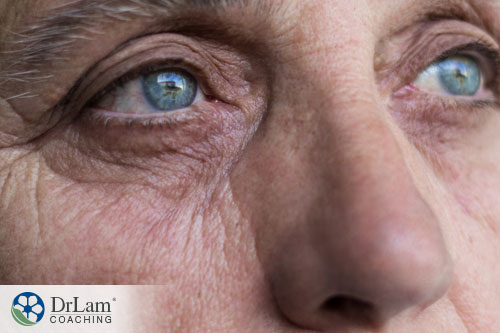
We also notice the effects of aging on the skin microbiome. In one study conducted on 37 healthy Japanese women, the “older” group (between ages 60 and 76) was found to have a significant loss in the abundance of the Propionibacterium compared to that in the “younger” group (between ages 21 to 37).
Other studies showed similar results, and the overall conclusion seems to be that the variations in the skin microbiome in older groups vs those in younger groups seem to lead to a decrease in the nutrients available to the skin. This is due to slowed skin cell renewal, a decrease in the sebaceous functions of the skin, and aging of the skin’s immunity.
If you want to slow down the aging of your skin, and to restore its function and appearance to more youthful levels, it is then very important to eliminate and reduce the factors that contribute to extrinsic aging, and also to ensure that your skin microbiome is balanced. This is especially important if you’ve had dry, sensitive, and reactive skin, or if you’ve been overzealous in your skin hygiene routines, using harsh products and antibacterial products, or you’ve been taking antibiotics and corticosteroids.
We suggest taking both an inside-out approach, as well as using topical treatments and products that help the skin from the outside-in.
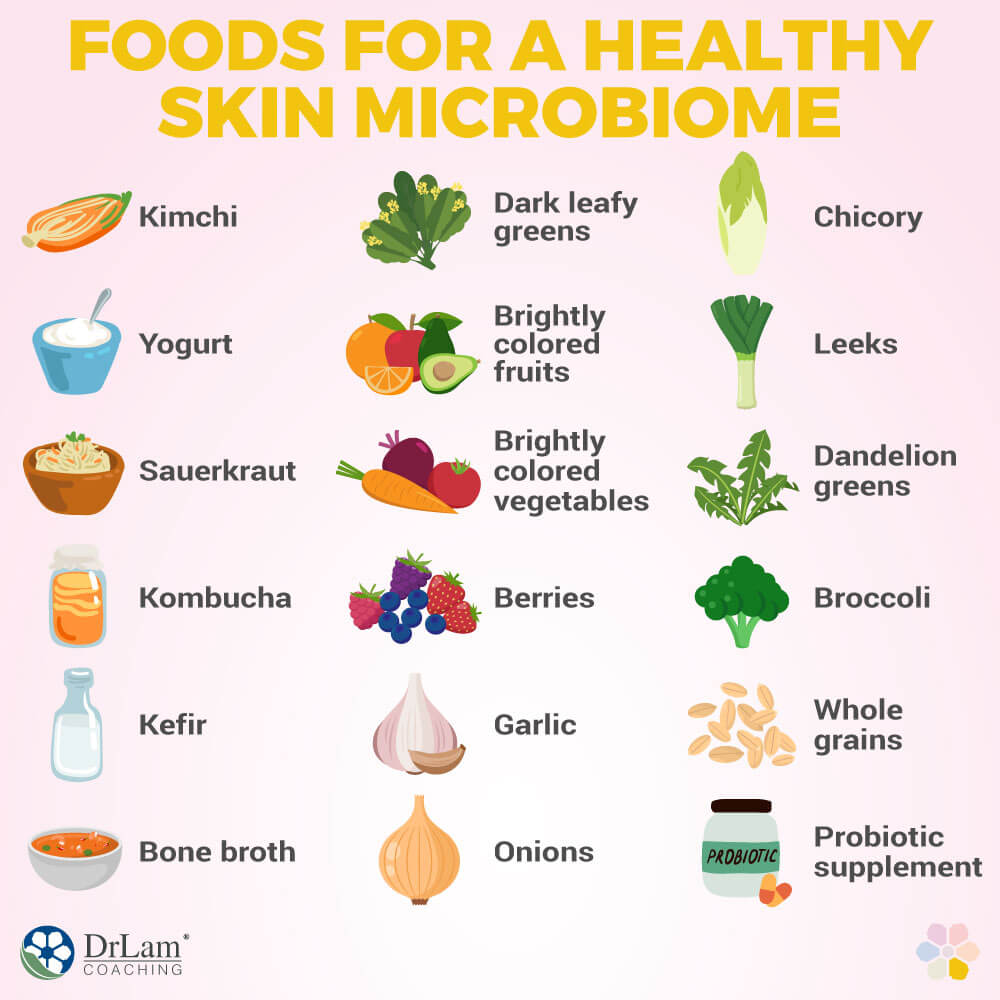
The first thing to consider on the path to healthier skin is what you put in your body, since the gut and gut microbiome play such a huge role in how your skin looks and in its health. As we’ve seen, inflammation is one of the main culprits when it comes to skin issues and flare-ups, and since it is also a root cause for many chronic diseases, you’d be doing your whole body a favor by tackling it.
This means taking up an anti-inflammatory diet, where you eliminate foods that are known to be inflammatory, such as refined sugar, gluten, dairy, junk food, highly processed foods, and foods containing trans fats. You should also cut out any foods that you are allergic to that may be considered healthy. For example, some people are sensitive to strawberries or certain spices.
Once you’ve eliminated the foods that inflame your gut, you need to start adding foods that are actively anti-inflammatory, rich in antioxidants, feed the good bacteria in the gut, and also those that help seal up the leaks in the gut.
Fermented foods, such as kimchi, yogurt, sauerkraut, kombucha, and kefir all contain healthy bacteria that can help balance your microbiome. Bone broth can help seal up the leaks in the gut, and it contains a good amount of collagen, which is great for the gut lining and the skin. Dark leafy greens, brightly colored fruits and vegetables, and especially berries, are all excellent anti-inflammatory and antioxidant foods.
 Eating a good amount of insoluble fiber also helps feed the good bacteria and keeps things moving along, and so helps with timely elimination and detoxification. Other types of prebiotic foods can help the growth of probiotics, and these include garlic, onions, chicory, leeks, and dandelion greens. Broccoli also seems to have a positive effect on the microbiome.
Eating a good amount of insoluble fiber also helps feed the good bacteria and keeps things moving along, and so helps with timely elimination and detoxification. Other types of prebiotic foods can help the growth of probiotics, and these include garlic, onions, chicory, leeks, and dandelion greens. Broccoli also seems to have a positive effect on the microbiome.
Stabilizing your blood sugar levels by eating slow-release carbs, such as whole grains, instead of refined carbs, along with healthy proteins and fats, can work wonders for your metabolism and your Inflammation circuit. One of the biggest stressors on the body, and the adrenals, is a cycle of blood sugar spikes and crashes. If you take care of this one issue, your adrenals will get stronger again and will help fight off any other stressors.
The adrenal fatigue diet is an excellent choice since it does all of the above and more. It’s the central element of adrenal fatigue recovery, and many clients that take it up notice changes in their health as well as their appearance, and that’s because the link between the gut and skin microbiome is undeniable.
You might also consider taking an oral probiotic supplement to give your gut microbiome a boost, which will then also directly impact the skin microbiome. Just make sure you choose a high-quality supplement. Things to consider in a probiotic supplement are the amount, the strains, the form of the supplement, expiration date, and if it has been properly stored. Probiotic supplements can help reduce dehydration and wrinkle depth in the skin, as well as improve skin elasticity, in only 12 weeks. They play a role in that “healthy glow” look.
If you have AFS, or any other chronic condition, you should check with your healthcare provider first before changing your diet and supplements, as drastic changes may add more stress on your body. Also, for those in advanced stages of adrenal fatigue, the Detoxification circuit can be so slow that taking any supplement may end up causing a paradoxical reaction.
The skincare market is huge, worth around $121 billion in 2016 alone. There are hundreds of different skincare products, each one touting some miraculous effect or other. So it is understandable to feel overwhelmed when researching the best product for your skin, and we hope to simplify this process as much as possible.
Since we’ve seen how oral probiotics can help with the gut microbiome, the natural conclusion would be that topical probiotics can support the skin microbiome as well.
There is some positive research on topical probiotics; they seem to lower the pH of the skin (a good thing for most), inhibit the growth of pathogens, and preserve skin health and function. They also seem to bind to the keratin in the skin and prevent the formation of biofilm, and in that way, can help with leaky skin. Finally, they seem to improve skin rejuvenation.
But before you go looking for one, the data still is insufficient to be sure that it will not be more harmful than helpful. And since the skin flora varies greatly from person to person and from one area of the skin to another, there are too many moving parts to consider at this time. So, instead of focusing on a topical probiotic with this or that strain of bacteria, it’s better to take a wider approach.
When considering skincare products, here are some of the most important do’s and don’ts that can help you determine whether a topical product is right for you:
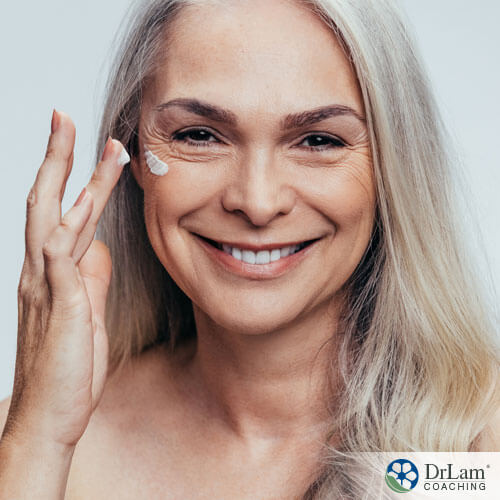
Some of our favorite natural skin products that have a positive effect on the skin microbiome include:
Finally, if you have adrenal fatigue, be careful what you put on your skin. Many AFS sufferers find themselves with increased sensitivity to different products, so try new products in small amounts first before applying to large areas of your skin.
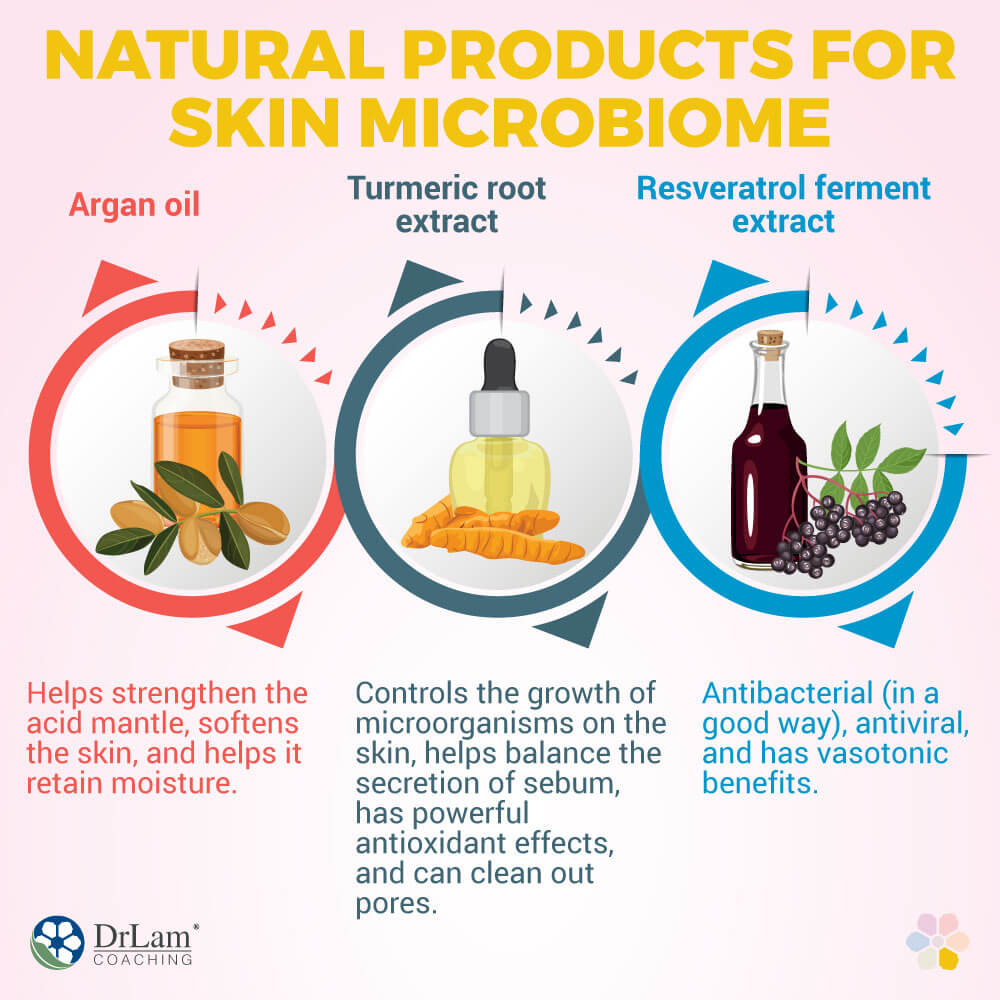
Just following these simple steps and trying out some of these more natural products can completely transform the appearance of your skin, from the inside out as well as from the outside in. Your skin plays a major role in your health, and your skin reflects how your health is internally. Always remember to take cues from the appearance of your skin on how you’re doing internally, and then address the root cause instead of the symptoms.
© Copyright 2020 Michael Lam, M.D. All Rights Reserved.
Just like with the gut, the skin microbiome is responsible for the health and integrity of the skin. When in balance, your skin looks radiant and skin issues heal more quickly, but when it is out of balance, flare-ups and faster aging can be the result. Here’s what to do about it.
